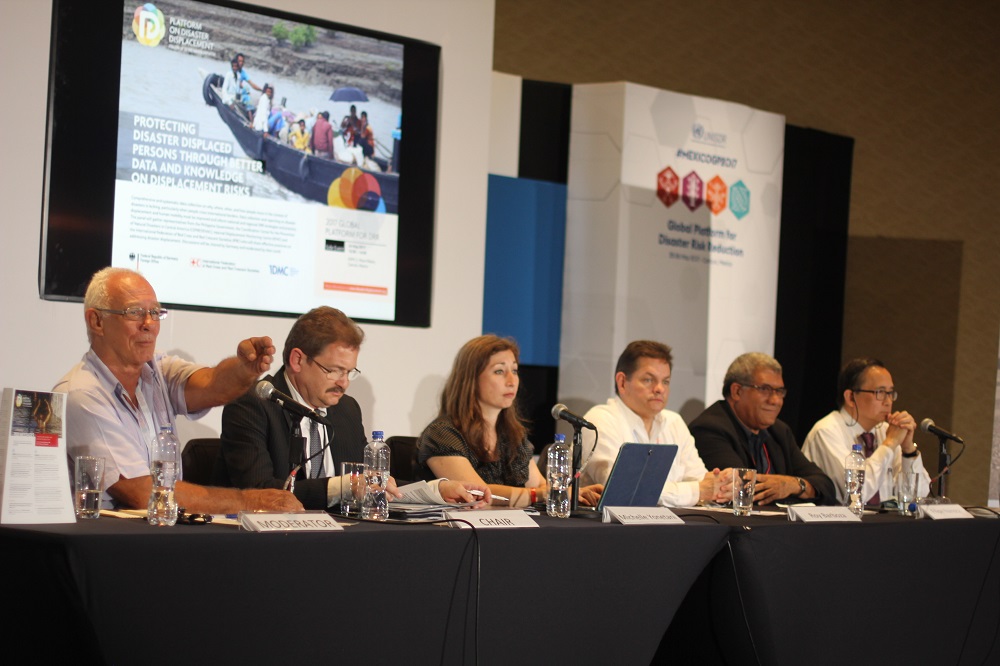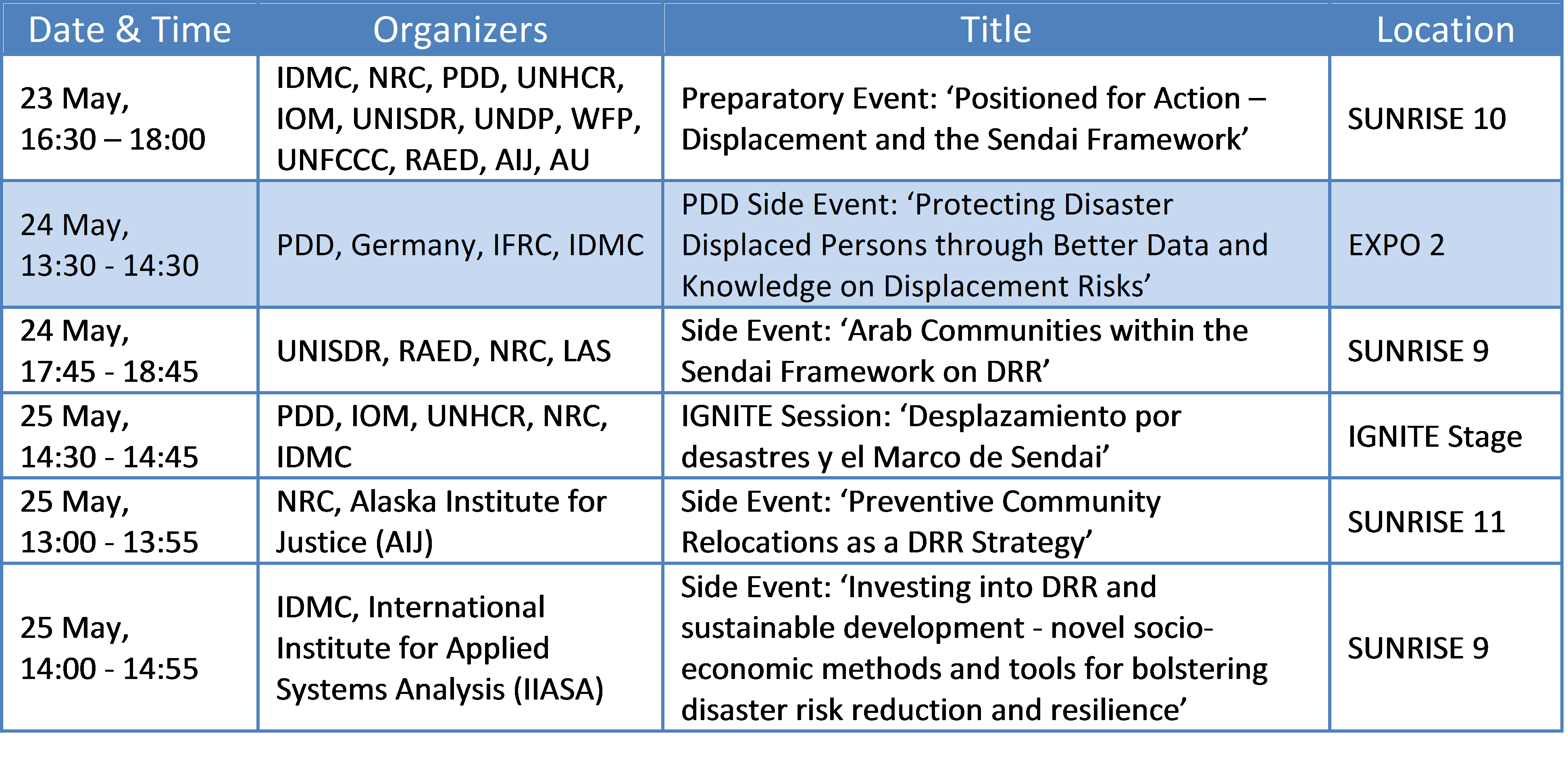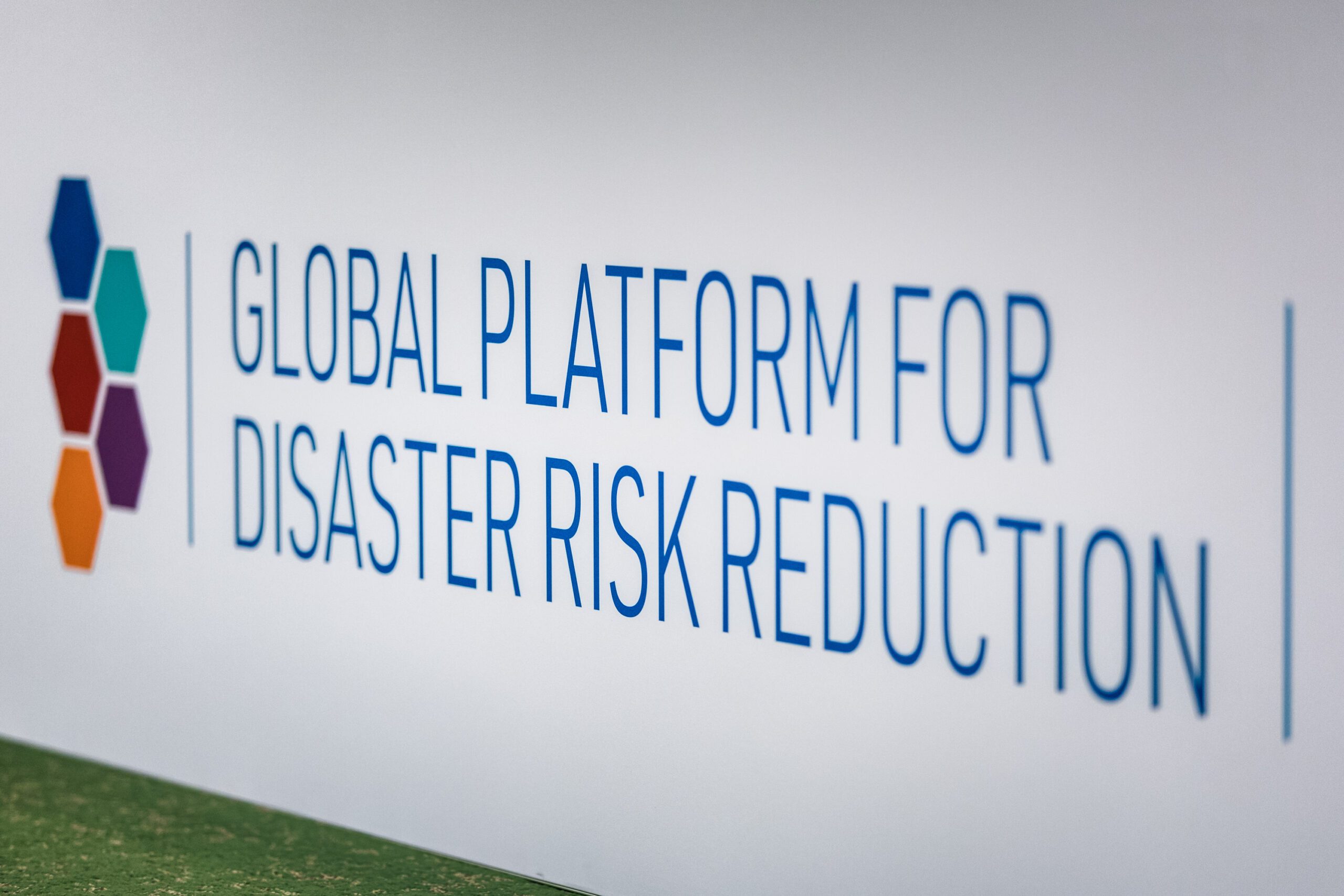Panel urges all countries to improve data on why, where, when and how people move in the context of disasters

At the Global Platform for Disaster Risk Reduction (DRR) in Mexico where the international community reviews global progress in the implementation of the Sendai Framework for DRR, representatives from governments, international and regional organisations stress the need to improve data and knowledge on displacement in the context of disasters.
Every year, millions of people are forced to leave their homes because of floods, tropical storms, droughts, glacier melting, earthquakes and other natural hazards. According to the Internal Displacement Monitoring Center (IDMC) speaking at the event, in 2016 alone, 24.2 million people were displaced by disasters in 118 countries and territories.
Many families find refuge within their own country, but some have to move abroad and the overall number of those seeking refuge outside their country remains unknown in most disaster contexts. With climate change, displacement is likely to increase, both internally and across borders.
“Different methodology, terminology, sudden-onset vs slow-onset disasters, disaggregated data… there are still many challenges to monitor disaster displacement”, insisted Michelle Yonetani, from IDMC. A key recommendation from the panel for all countries working on strengthening their DRR efforts includes the need to collect data on displacement risks, vulnerabilities, and patterns of displacement.
“In the humanitarian world data is king”, declared Filipe Nainoca, Director-General of the Fiji Red Cross Society, International Federation of the Red Cross and Red Crescent Societies (IFRC) during the panel discussion, reflecting on the information and knowledge challenges posed in the aftermath of tropical Cyclone Winston.
The event highlighted the need to understand which populations are at risk of displacement and why, to help design timely appropriate resilience and protection measures, to reduce the risk of displacement and limit the social impacts of disasters.
The panel discussions also focused on the need to include disaster displacement into the monitoring and implementation of the Sendai Framework in line with the Sustainable Development Goals (SDGs) while developing national and local DRR strategies that include disaster displacement by 2020.
“In Central America, the Coordination Center for the Prevention of Natural Disasters in Central America (CEPREDENAC) has taken the lead on this matter and has recently incorporated references on disaster displacement into relevant regional policy instruments. For instance, the Regional DRR Plan 2014-2019 calls States to ‘promote mechanisms that guarantee international protection to migrants and their needs, in case of disasters, including humanitarian assistance’, said Roy Barboza, Executive Secretary of CEPREDENAC.
Speaking on the panel as well, Evan P. Garcia, Permanent Representative at the Permanent Mission of the Philippines confirmed that provisions for displacement are already included in DRR strategies across the different phases, despite limited funds. In 2016, the World Risk Report 2016 listed the Philippines as the 3rd country in terms of exposure to many types of hazards.
The discussions were moderated by Alan Lavell, Coordinator of the Programme for the Social Study of Risks and Disasters at the Latin American Social Sciences Institute, and chaired by the Government of Germany.
“The importance to improve the availability of data about displacement cannot be underestimated. To better protect people displaced internally or internationally, enhanced cooperation, coordination and action on national and regional levels are necessary. Let us learn from the best practice and methodologies“, reaffirmed Peter Felten, Head of Division for Humanitarian Assistance at the Federal Foreign Office of Germany, and Chair of the Platform on Disaster Displacement (PDD).
The objective of the PDD is to follow-up on the work started by the Nansen Initiative, and to implement the recommendations of the Protection Agenda, a toolbox to better prevent and prepare for displacement and to respond to situations when people are forced to find refuge, within their own country or across the border. It works through a Steering Group of States, an Advisory Committee (representatives of international organizations, academia, research institutions, etc.) and a Coordination Unit in Geneva, Switzerland.
Calendar of other relevant events

Useful Documents
PDD Policy Brief
 Loading...
Loading...
PDD Messages
 Loading...
Loading...
PDD Side Event Flyer
 Loading...
Loading...
PDD Side Event Concept Note
